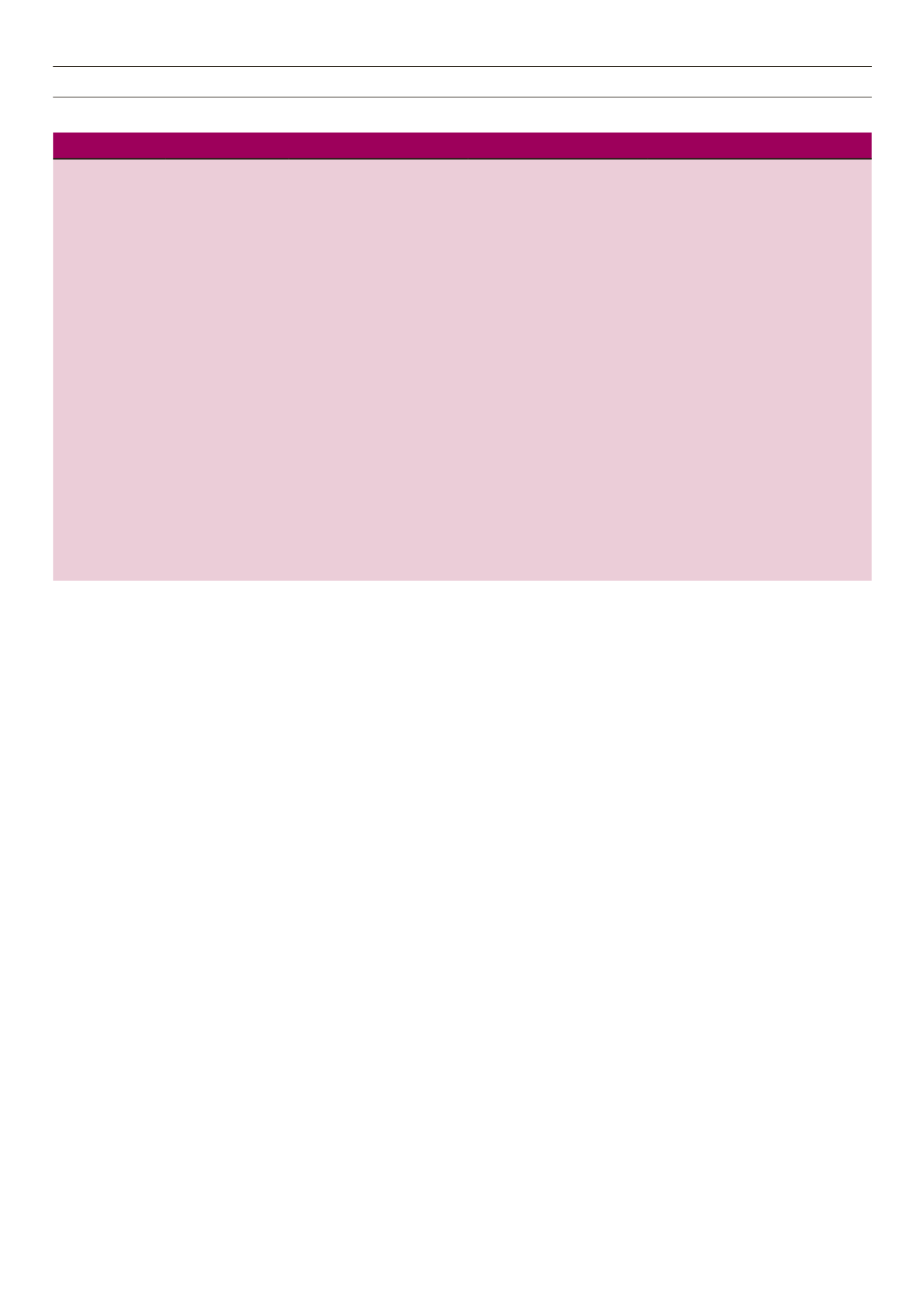

8
VOLUME 14 NUMBER 1 • JULY 2017
REVIEW
SA JOURNAL OF DIABETES & VASCULAR DISEASE
healing.
36
Unlike high-intensity medical lasers, which are used to
cut and coagulate tissues, LLLT involves the use of medical lasers
that operate at low intensities, which instead of causing damage,
promote healing.
37
LLLT in the promotion of wound healing
The exact mechanism of action of LLLT is not completely understood,
however in some
in vitro
studies it has been noted that LLLT supplies
direct biostimulative light energy to body cells.
38
For LLLT to be
effective, the light must be absorbed by the targeted tissue.
37,39
Photon energy is absorbed by photo-acceptors or chromophores
within the cells. The main photo-acceptor in cells is cytochrome c
oxidase, which is found inside the cell mitochondria.
35
When the
mitochondrion absorbs photons, it is stimulated to produce more
energy-rich adenosine triphosphate (ATP), which in turn temporarily
increases the cell membrane permeability to absorb calcium ions,
enhancing cellular activity and repair.
35
In this way, when absorbed,
photons induce cellular changes, and tissue repair and healing is
accelerated.
37
Since chronic ulcers such as diabetic ulcers do not
follow the normal pathway of healing, phototherapy has been
shown to be a promising form of treatment to promote the ulcer
healing process.
16
Studies using LLLT have shown it to positively stimulate diabetic
ulcer fibroblasts, which resulted in promoted wound healing
through increased viability, proliferation of ATP, growth factors and
cytokines, and nitric oxide stimulation, as well as decreased cellular
damage and pro-inflammatory cytokine expression.
16,38,40
According
to the literature, LLLT transforms fibroblasts into myofibroblasts,
which are essential for the development of granulation tissue and
so promotes wound contraction.
37,39
Inadouble-blinded,randomised,placebo-controlledexperimental
trial, Minatel
et al.
treated the chronic diabetic leg ulcers of 23
patients that were unresponsive to other forms of treatment.
Thirteen ulcers were treated with phototherapy (combined 660
and 890 nm) twice a week until healed, or for a maximum period
of three months. The rest were sham irradiated (10 ulcers). In the
group of ulcers that were irradiated, 58.3% resolved completely,
and 75% of the ulcers achieved 90 to 100% healing by day 90.
5
In a clinical study by Mokmeli and colleagues, which determined
the effect of local and intravenous LLLT for the healing of 74 DFUs,
the results showed that 62.2% of the patients’ ulcers completely
healed, 12.2% of the ulcers healed by more than half, and only
8.1% of ulcers healed less than half. However, 12.2% of the
patients did not complete their treatment (which only consisted of
five sessions of LLLT). Excluding the wounds that were found to be
in stage 5, more than 80% of each categorised stage were found
to have been almost completely healed (by more than 50%) within
a two-month period.
41
In their study, Kajagar and colleagues compared diabetic ulcer
healing in 68 patients. These patients were randomised into a
LLLT-plus-conventional care group, which was compared with
conventional care alone. On the basis of the ulcer size, the duration
of exposure was calculated to deliver 2–4 J/cm
2
at 60 mW, 5 KHz daily
for 15 days. The ulcer floor and edges were irradiated. A significant
percentage of ulcer reduction in the LLLT group compared with
conventional care alone was noted: 40.24±6.30 mm
2
in the study
group and 11.87±4.28 mm
2
in control group (
p
<0.001,
Z
=7.08).
42
According to the literature, acute inflammation is a vital
stage in healing and for chronic ulcers this must be induced by
debridement in order for the healing to progress. Mechanical or
sharp debridement is one of the essential treatment procedures in
podiatry with which chronic inflammation can be converted to acute
inflammation.
14,15
Once acute inflammation has been achieved,
it should then be followed by LLLT to stimulate the proliferation
Table 1.
Clinical trials on diabetic lower-limb ulcer treatment with podiatric interventions
Study
Study design
Participants
Intervention
Outcome
Armstrong
et al.
(2005)
A randomised
controlled trial
50 patients with University of
Texas grade 1A DFUs
Off-loading with RCW and
iTTC. Evaluated weekly for 12
weeks
A significantly higher proportion of
patients healed at 12 weeks in the iTTC
group than in the RCW group [82.6%/19
patients vs 51.9%/14 patients,
p
= 0.02
or 1.8 (95% CI : 1.12.9)]
Faglia
et al.
(2010)
A randomised
controlled trial
45 diabetic patients with non-
ischaemic and non-infected
neuropathic plantar ulcers
Off-loading with a non-
removable fibreglass off-
bearing cast (TCC) and walker
cast. Treatment duration was
90 days
The mean duration of healing time was
35.3 ± 3.1 days in the TCC group and
39.7 ± 4.2 days in the Stabil-D group
(
p
= 0.708)
Wilcox
et al.
(2013)
Retrospective
cohort study
Sample of 154644 patients
with 312744 wounds of all
causes; DFUs (19.0%), venous
leg ulcers (26.1%), and
pressure ulcers (16.2%). From
525 wound-care centres from
1 June 2008 to 31 June 2012
Debridement at different
frequencies
The median time to heal after weekly
or more frequent debridement for DFUs
was 21 days compared to 64 days when
debridement frequency was in a range
of every 1–2 weeks, and 76 days when
debridement was once every 2 weeks or
more
Ahmad
et al.
(2012)
Retrospective
cohort study
Medical notes for 30 patients
who underwent skin grafting
for DFU (graft group) and
30 other patients, who were
treated conservatively (control
group)
Radical debridement to prepare
the wound bed for grafting
A 100% skin graft take was recorded
in 80% of the patients on day 4
postoperatively; 93% of patients in the
graft group healed completely. The mean
healing time and hospital stay was lower
in the skin-graft group compared to the
control group (4.0 ± 1.5 vs 10.0 ± 1.0
weeks)



















